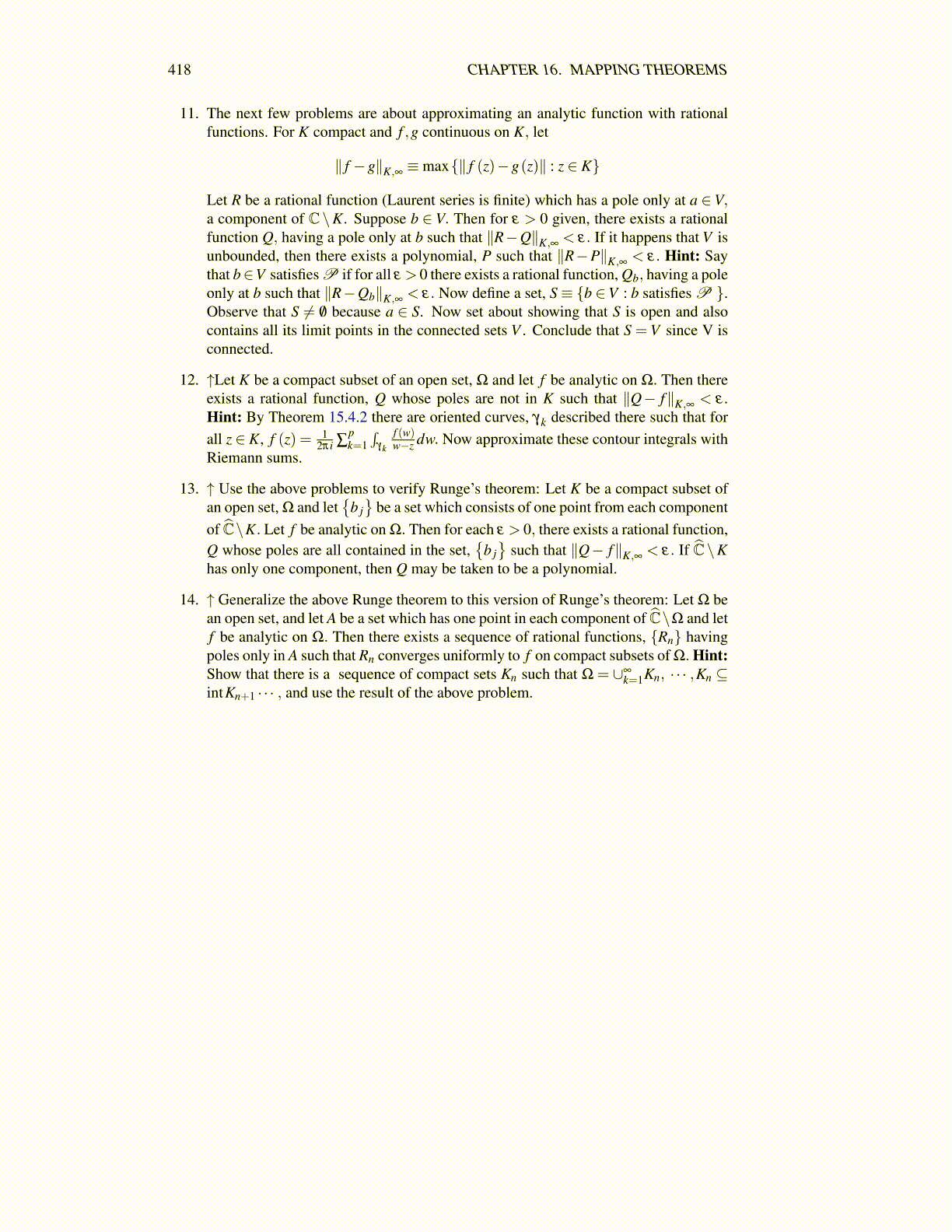
418 CHAPTER 16. MAPPING THEOREMS
11. The next few problems are about approximating an analytic function with rationalfunctions. For K compact and f ,g continuous on K, let
∥ f −g∥K,∞ ≡max{∥ f (z)−g(z)∥ : z ∈ K}
Let R be a rational function (Laurent series is finite) which has a pole only at a ∈V,a component of C \K. Suppose b ∈ V. Then for ε > 0 given, there exists a rationalfunction Q, having a pole only at b such that ∥R−Q∥K,∞ < ε. If it happens that V isunbounded, then there exists a polynomial, P such that ∥R−P∥K,∞ < ε. Hint: Saythat b∈V satisfies P if for all ε > 0 there exists a rational function, Qb, having a poleonly at b such that ∥R−Qb∥K,∞ < ε. Now define a set, S≡ {b ∈V : b satisfies P }.Observe that S ̸= /0 because a ∈ S. Now set about showing that S is open and alsocontains all its limit points in the connected sets V . Conclude that S = V since V isconnected.
12. ↑Let K be a compact subset of an open set, Ω and let f be analytic on Ω. Then thereexists a rational function, Q whose poles are not in K such that ∥Q− f∥K,∞ < ε .Hint: By Theorem 15.4.2 there are oriented curves, γk described there such that forall z ∈ K, f (z) = 1
2πi ∑pk=1
∫γk
f (w)w−z dw. Now approximate these contour integrals with
Riemann sums.
13. ↑ Use the above problems to verify Runge’s theorem: Let K be a compact subset ofan open set, Ω and let
{b j}
be a set which consists of one point from each componentof Ĉ\K. Let f be analytic on Ω. Then for each ε > 0, there exists a rational function,Q whose poles are all contained in the set,
{b j}
such that ∥Q− f∥K,∞ < ε. If Ĉ\Khas only one component, then Q may be taken to be a polynomial.
14. ↑ Generalize the above Runge theorem to this version of Runge’s theorem: Let Ω bean open set, and let A be a set which has one point in each component of Ĉ\Ω and letf be analytic on Ω. Then there exists a sequence of rational functions, {Rn} havingpoles only in A such that Rn converges uniformly to f on compact subsets of Ω. Hint:Show that there is a sequence of compact sets Kn such that Ω = ∪∞
k=1Kn, · · · ,Kn ⊆intKn+1 · · · , and use the result of the above problem.